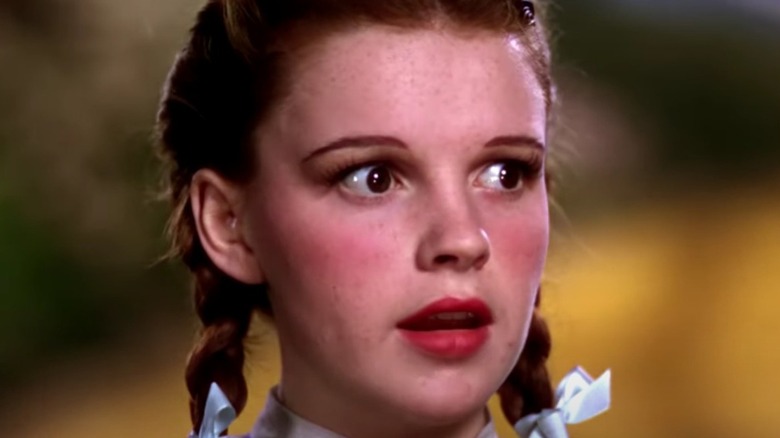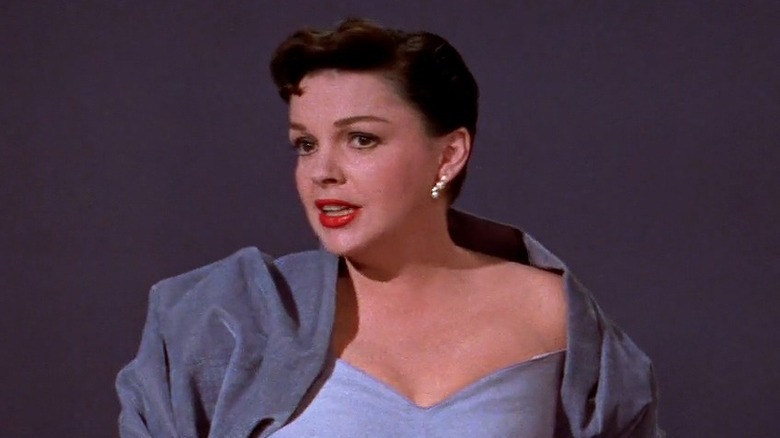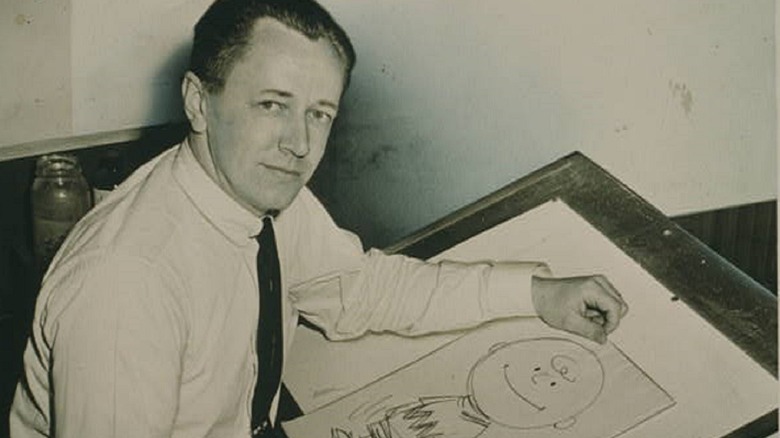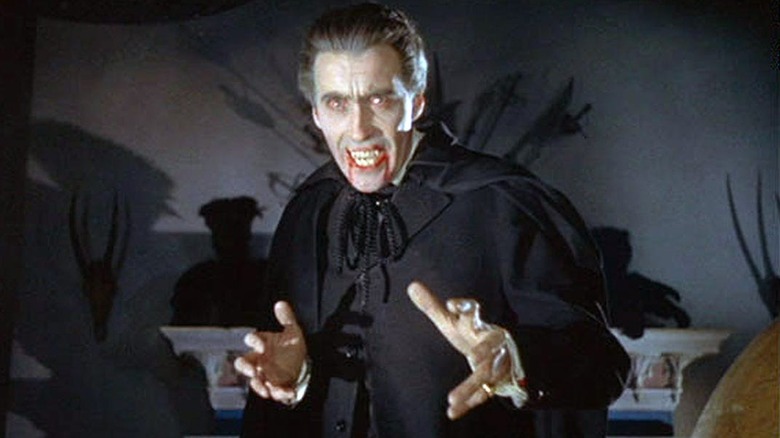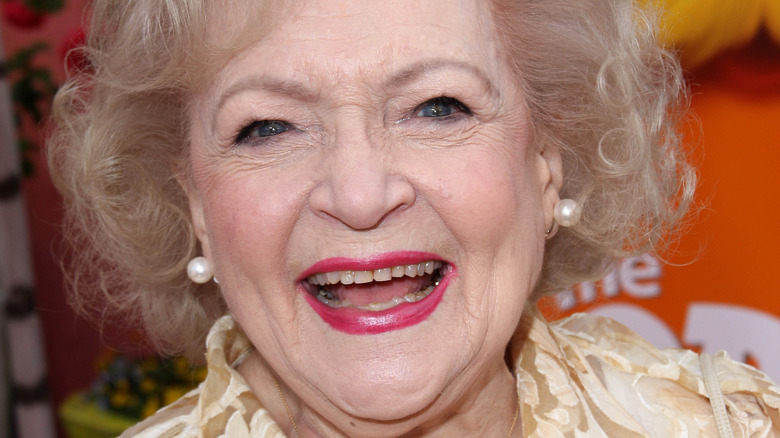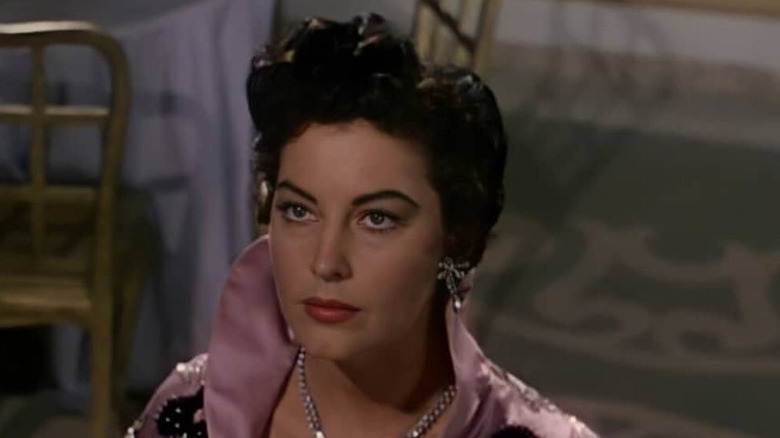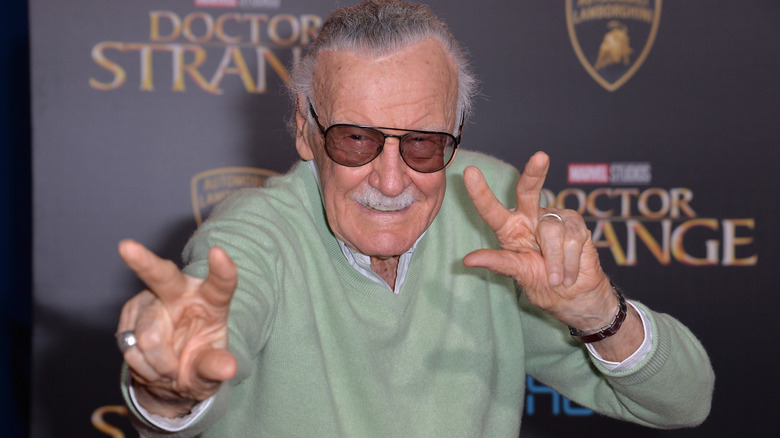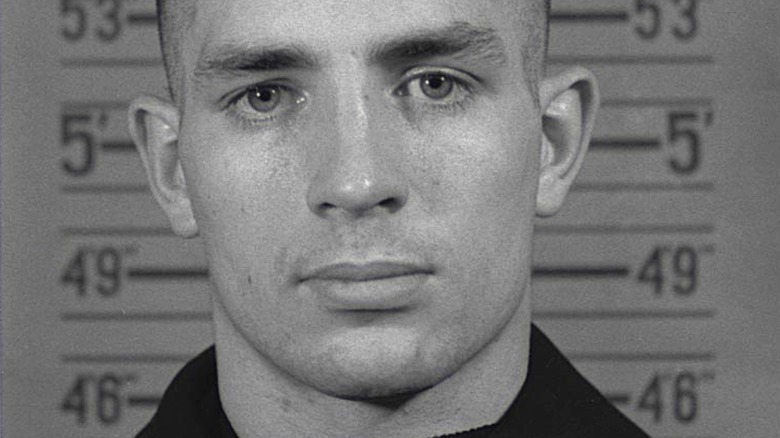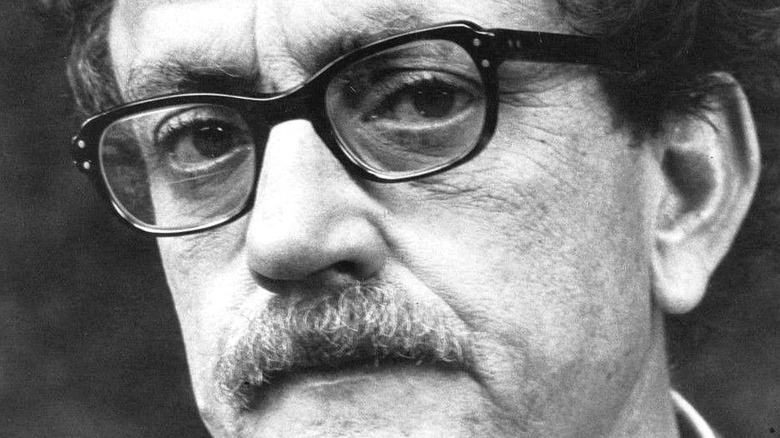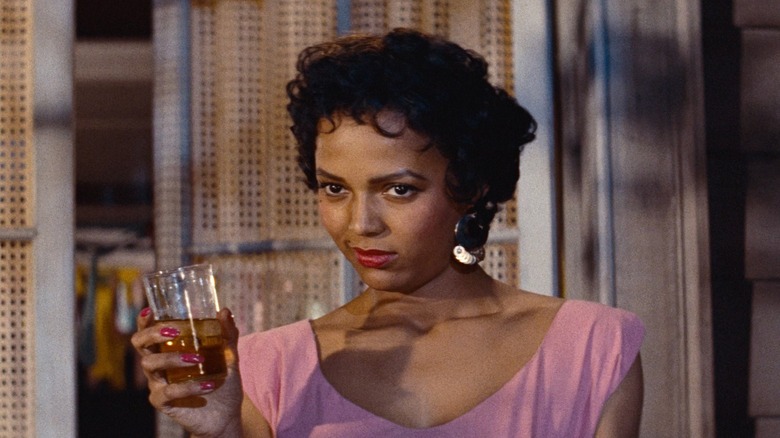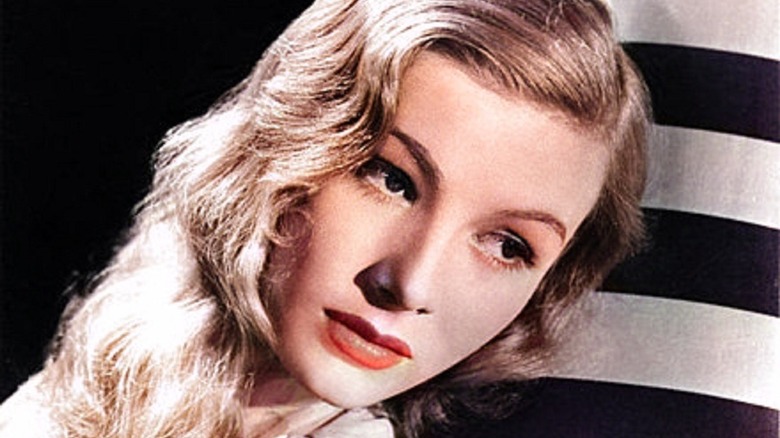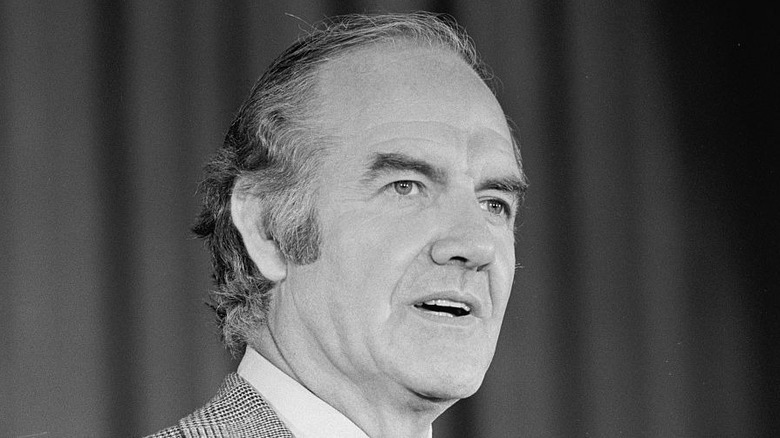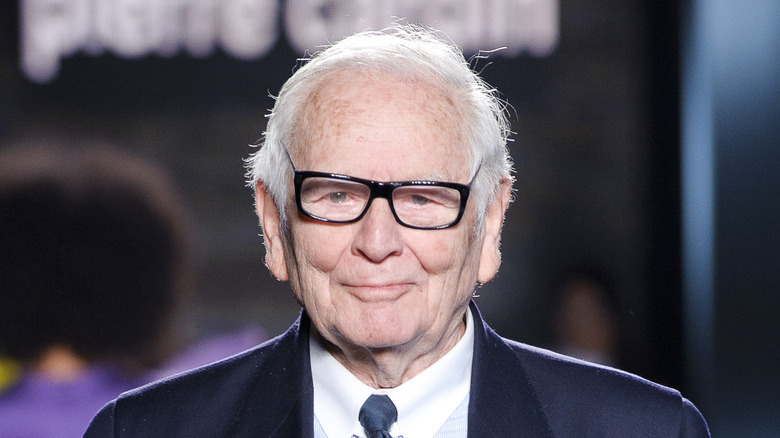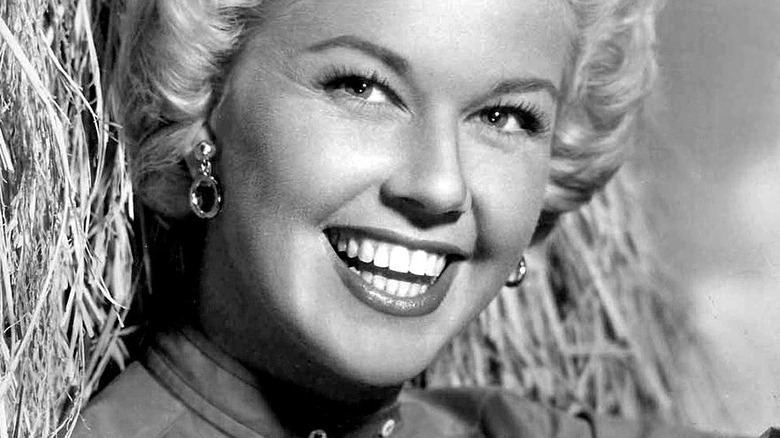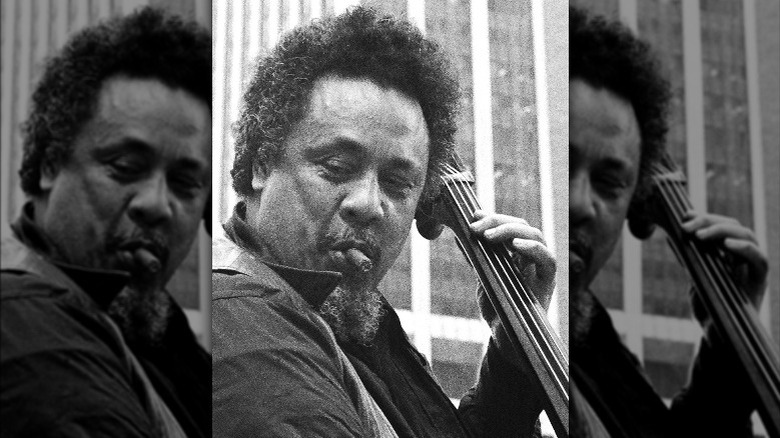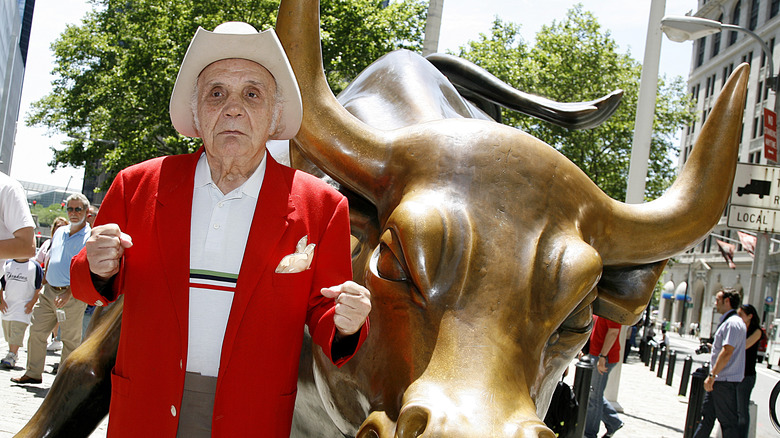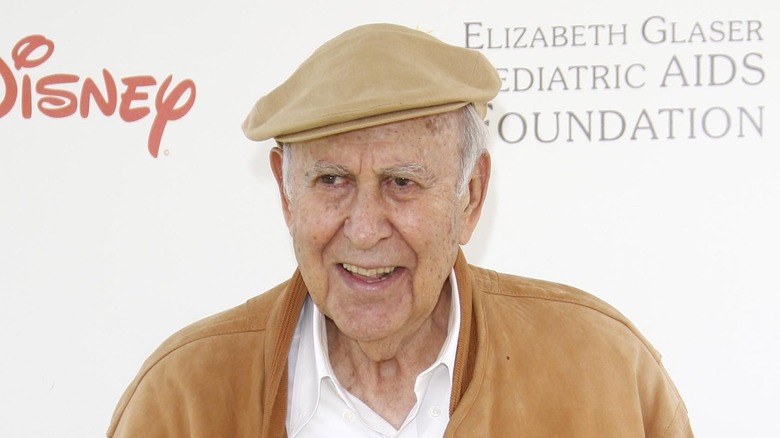Famous People Who Would Have Turned 100 In 2022
In 1922, drivers in Vancouver, Canada, were forced to switch from the left side of the road to the right. (It stuck.) Construction on the then-brand-new Yankee Stadium began in New York. (The building proved less permanent.) Benito Mussolini became Prime Minister of Italy. (He lasted even less time than the stadium.) And 17 babies were born, who would eventually leave their names — but not necessarily the ones their parents gave them — in the history books.
The group of people who would have turned 100 in 2022 demonstrate tenacity, resilience, and a range of talents. An impressive number lived into their nineties. Many had difficult personal lives. Some became at least as famous for their failures as for their successes. At least two dedicated the later part of their lives to animal welfare. Some knew each other — two even starred as best friends on a beloved sitcom.
Including multiple actors, a jazz virtuoso, a boxer with a dark past, and two comic creators, here's who would have turned 100 in 2022.
Judy Garland
Judy Garland spent over four decades singing, dancing, and acting on stage and in movies. It's an even more impressive feat when you know she was only 47 when she died in 1969.
Garland was born Frances Gumm on June 10, 1922, to vaudevillians Frank and Ethel, who ran a theater in Grand Rapids, Minnesota. She made her stage debut aged about three years old, singing "Jingle Bells" for a Christmas show. In case that detail hadn't given it away, Ethel was one of the early stage moms, although Garland also enjoyed performing. When she was 11, after the family had moved to Lancaster, California, she and her two older sisters sang and danced on stage in a trio. In 1935, as the LA Times reports, 13-year-old Garland was talent scouted and signed to MGM. Garland's most famous role came four years later, when she played wide-eyed Dorothy in "The Wizard of Oz." She also went on to star in classics including the 1954 adaptation of "A Star is Born" and "Meet Me in St. Louis."
Her career and personal life were characterized by brilliant highs and devastating lows. Garland became addicted to drugs and alcohol, which she blamed on MGM and her mother. Four of her five marriages ended in divorce. Her star power faded and brightened in waves, making Garland famous as the Queen of Comebacks. On June 22, 1969, Garland was found dead in her house in London, having accidentally overdosed on barbiturates.
If you or anyone you know is struggling with addiction issues, help is available. Visit the Substance Abuse and Mental Health Services Administration website or contact SAMHSA's National Helpline at 1-800-662-HELP (4357).
Charles M. Schulz
Although comic artist Charles M. Schulz didn't make it to 100, dying aged 77 on February 12, 2000, he lived a remarkably rich life. In his New York Times obituary, his widow Jeannie was quoted as saying, "He had done everything he wanted." What Schulz wanted above all — professionally, at least — was to draw his beloved "Peanuts" comic.
Born on November 26, 1922, Schulz started drawing at a young age, in the hopes of one day being paid for his cartoons. After a stint in the army during World War II, he took any job he could find related to comics. In 1947, he created a weekly strip called "L'il Folks," which eventually became "Peanuts." Having grown up hoping to create comics as famous as "Popeye" and "Krazy Kat," Schulz exceeded his ambitions. "Peanuts" ran for 43 years, with Schulz drawing every one of the 18,250 strips published in his lifetime, even after he developed a tremor in his hands. The characters also appeared in TV specials, including the now-classic Halloween movie "It's the Great Pumpkin, Charlie Brown."
Schulz had five children with his first wife, including her daughter from a previous relationship whom he adopted. The couple divorced in 1972, and Schulz married Jeannie in 1973. He was diagnosed with colon cancer in November 1999, and announced his decision to stop creating "Peanuts" a month later. His last strip bid farewell to the characters, and was published in its regular Sunday slot the day after his death.
Christopher Lee
Unlike one of his most famous characters, Christopher Lee could not elude death forever — although he did give it a good run for its money. Lee died on June 7, 2015, having turned 93 on May 27.
How you knew him depended on your generation. After struggling for years, Lee broke out as Dracula in Hammer Horror's 1958 movie "Horror of Dracula." Lee reprised the role at least 10 times, according to the New York Times. Appearances as Frankenstein's monster and the Mummy, and in "The Wicker Man," further cemented his horror icon status. Lee later landed roles in some of the most famous film franchises of all time — also in the villainous vein. In 1974, he starred opposite Roger Moore as the titular Bond baddie in "The Man With the Golden Gun." (Fun fact: He and "Bond" creator Ian Fleming were second cousins.) Decades later, "Star Wars" fans encountered Lee as a different count — Count Dooku — in the prequels, and he played (spoiler alert) treacherous wizard Saruman in "The Lord of the Rings" movies, and one of "The Hobbit" prequels.
Lee's life away from the cameras was fascinating too. He served in the Royal Air Force (RAF) during World War II, liaising with intelligence and Special Forces. He also loved music: he released two metal albums in 2010 and 2013 respectively. The first, "Charlemagne: By the Sword and the Cross," won him a prestigious Spirit of Metal Award at that year's Metal Hammer Golden Gods Awards.
Betty White
Comedic genius and TV pioneer Betty White delighted audiences for over 80 years. In 2018, she was awarded the Guinness World Record for Longest TV Career by an Entertainer. Born January 17, 1922, White started modeling and acting in the late '30s, although she put her fledgling career on hold during World War II to work in the American Women's Voluntary Services, the BBC reports.
White's break came in 1949, with a part on the talk show "Al Jarvis's Hollywood on Television." She took over when Jarvis left, and later described the experience as "like going to television college." The show earned White her first of 16 Emmy nominations: She won a further six, including an induction into the Hall of Fame in 1995. In the '50s, White produced and starred in her own sitcom, hosted her own variety show, and regularly appeared on many game shows. She even met her third husband, Allen Ludden, on screen, when she appeared on the game show he hosted. They were married from 1963 until Ludden died in 1981. Today, White is most famous for two sitcoms. She played ruthless domestic goddess Sue Ann Nivens on "The Mary Tyler Moore Show" from 1973 to 1977, and kind-hearted but dim-witted Rose Nylund on "Golden Girls" for the show's seven-year run, ending in 1992.
Away from work, White devoted her downtime to animal charities, which were among the many who paid tribute to her after her death on December 31, 2021, aged 99.
Bea Arthur
Before Bea Arthur went down in sitcom history as sharp-tongued Dorothy Zbornak on "Golden Girls," she already had a hit show and a hot Broadway career to her name. Arthur was born May 13, 1922, four months after her "Golden Girls" co-star Betty White, and over a year before Estelle Getty, who played her mother on the show. In February 1943, she became one of the first women to join the Marine Corps Women's Reserve, completing basic training and then working as a typist.
After working in summer stock and minor TV roles, in 1955 Arthur landed her most important early part: Lucy Brown in "The Threepenny Opera." It led to more stage and TV work, including Yente the Matchmaker in the 1964 original Broadway version of "Fiddler on the Roof," and the sidekick of Angela Lansbury's titular character in "Mame." In 1971, Arthur guest-starred in the sitcom "All in the Family." She was so popular that she got her own spin-off: "Maude." The show ran from 1972 until 1978, and was the first primetime series to feature a lead character — Maude herself — choosing to have an abortion, the LA Times reports.
Dorothy was Arthur's most famous role. She later said she was immediately excited about the part, because the first script was "bright and adult and fabulously funny." Arthur's performances in "Maude" and "Golden Girls" earned her one Emmy each for Outstanding Lead Actress in a Comedy Series. She died on April 25, 2009, aged 86.
Ava Gardner
When Ava Gardner was born on December 24, 1922, the world she entered was far away from the glamorous Hollywood life she would eventually lead. As the LA Times reports, Gardner's father was a tobacco farmer in North Carolina at the time, but when she was two, he lost the farm and was forced to become a sharecropper.
Gardner landed a screen test and then a contract after photos her brother-in-law had taken of her ended up at MGM. The studio executives and ultimately audiences were less interested in her acting skills than her incredible looks. (Although she was nominated for an Oscar in 1954.) Which partly explains why people tend to remember her relationships rather than her movies.
Gardner was married three times: to actor Mickey Rooney when she was 19; to bandleader Artie Shaw for a year; and most famously to Frank Sinatra. Gardner and Sinatra first met when she was still married to Rooney, and it was chemistry if not love at first sight. The couple tied the knot on November 7, 1951, days after Sinatra's first marriage was finalized. The relationship was tumultuous, with both abusing alcohol, and Gardner — at least — having multiple affairs. Gardner filed for divorce in 1954, and it was finalized in 1957.
In 1958, Gardner walked out on MGM and Hollywood, instead splitting her time between London and Madrid. She died at her house in the former on January 25, 1990, aged 67.
Stan Lee
Few comic book authors are as recognizable as white-haired, aviator-sporting Stan Lee, largely thanks to his cameos in the movies about his most famous creations. He rescues a little girl from falling debris in 2002's "Spider-Man," is seen watering his lawn in "X-Men: The Last Stand," and drives a school bus in "Avengers: Infinity War," to name a few.
Lee was born Stanley Lieber on December 28, 1922. According to the New York Times, Lee originally wanted to be a Very Serious Author. But at 17, he took a job at magazine and comics publisher Timely Comics (later Marvel). Lee started as a goffer and worked his way up to writing and editing. He teamed up with artist Jack Kirby, the co-creator of Captain America. The pair are responsible for many iconic Marvel characters, including the X-Men, Iron Man, and Black Panther. Kirby left for rival D.C. in 1970, and by 1972, Lee was leading Marvel.
Despite being known as one of the godfathers of modern comics, Lee left Marvel in 1998, to start his own short-lived media company. In 2002, after the success of the first Tobey Maguire "Spider-Man" movie and the animated "X-Men" series, Lee successfully sued Marvel for failing to pay 10% of the profits of TV and movies based on his characters. He was executive producer on many of the Marvel movies that have dominated cinema for the last five years, and regularly appeared at conventions. Lee died, aged 95, on November 12, 2018.
Jack Kerouac
Whether you love author Jack Kerouac's stubbornly unfollowable prose poetry or find it, well, stubbornly unfollowable, you can't deny his impact on American culture. Although he became famous for his innovative use of English, Kerouac's first language was French, thanks to his parents, who were from Quebec. The man the world would come to know as Jack was born Jean-Louis Lebris de Kerouac on March 12, 1922, in Lowell, Massachusetts. Kerouac's father owned a print shop, but a combination of the Great Depression and a flood wiped out most of the family's income. Kerouac had earned a scholarship to play football at Columbia, but he quit the team after breaking his leg a few games into his first season.
This was when Kerouac first started traveling, working his way around the East Coast. After passing through Connecticut, D.C. and Virginia, and briefly joining the U.S. Naval Reserve, he went to New York, where he met fellow writers Allen Ginsberg and William Burroughs. Together, they formed the foundation of what became known as the Beat Generation. (Kerouac is sometimes credited with coming up with the name, and sometimes not.)
Kerouac continued traveling, with his adventures inspiring his most famous book, "On the Road," written over three weeks in 1950, and finally published in 1957. He wrote 18 books total, according to the LA Times, but by the end of his life he had fallen out of vogue. He died on October 21, 1969, aged 47, of a massive abdominal hemorrhage.
Kurt Vonnegut
Like many of his contemporaries on this list, author Kurt Vonnegut served in the U.S. military during World War II. His semi-autobiographical novel, "Slaughterhouse-Five," was based on his harrowing experiences as a prisoner of war (POW) captured by the Germans, during which time he survived the bombing of Dresden. But because this was Vonnegut, he added a science-fiction twist and a dark sense of humor.
The New York Times reports that when "Slaughterhouse-Five" was released in 1969, it resonated with a generation that was protesting against a different bloody conflict: the war in Vietnam. Vonnegut's focus on unconventional writing techniques and grammatical devices rattled the established literati, but it made him a literary hero to young people looking to break with the stifling norms.
Vonnegut had been writing for decades by that point. After the war, he worked as a reporter in Chicago while taking graduate courses in anthropology. His 1963 novel "Cat's Cradle" served as his thesis. Vonnegut ultimately wrote 14 novels, in addition to plays, short stories, and essays. Many drew on sci-fi themes, but he also used philosophical allegories and metafictional devices, such as having the narrator interrupt the action.
Vonnegut died on April 11, 2007, five months to the day after his 84th birthday, of brain injuries sustained in a fall.
Dorothy Dandridge
Had Dorothy Dandridge lived in a less racist society than 20th century America, she may well have achieved Hollywood superstar status. Instead, the first Black woman to be nominated for a Best Actress Oscar died in obscurity, broke, on September 8, 1965, aged just 42, of an accidental overdose of antidepressants.
Like her fellow 1922 baby Judy Garland, Dandridge started her career young, singing alongside her sister under the guidance of her frustrated-performer mother. When she got older, she became a nightclub singer. In 1954, as she was tiring of that life, Dandridge landed what should have been her breakout role: the lead in Otto Preminger's "Carmen Jones." It earned her that Oscar nomination. Incidentally, Garland was also nominated for "A Star is Born." They lost to Grace Kelly.
However, the triumph of "Carmen Jones" did not produce the expected flood of exciting new roles. In the mid-1950s, pandering to racist white audiences, Hollywood executives balked at casting Black leading ladies. And according to Vanity Fair, Preminger, whom Dandridge was dating, steered her away from supporting roles, towards nightclub singing. The most notable performance of her later career was in his adaptation of the opera "Porgy and Bess."
After breaking up with the emotionally abusive Preminger, Dandridge married her second husband (her first marriage was in her early nightclub days.) He also turned out to be abusive and left her in debt. Just 10 years after her Oscar nomination, Dandridge died with only $2.14 to her name.
Veronica Lake
A superstar in her heyday, Veronica Lake is most famous now for her hairstyle. She popularized a side-part so severe that her long, gently waved blonde hair covered one eye. The look was so widely known as Lake's trademark that during World War II, she made a video showing female factory workers how to pin their hair to avoid catching it in the machines. But Lake was more than her hairstyle. Born on November 14, 1922, in Brooklyn, New York, Lake made 26 movies in her brief Hollywood career, including hits like "I Wanted Wings" and "Blue Dahlia." According to the LA Times, she earned $4,500 a week at her peak of popularity in the 1940s.
However, Lake ultimately quit Hollywood, later commenting that being an actress felt like being forced through an assembly line. She went from making videos for factory workers to being one herself, as well as a waitress, although she made a brief stage comeback in England, and appeared on TV. She married and divorced four times, and struggled with alcohol abuse.
Lake died on July 7, 1973, aged 50, of acute hepatitis. According to Today, only a few people attended her memorial service, and her ashes were held until 1976 because no one paid the fees. They were scattered off the Miami coast — although a New York boutique owner has claimed to have some. In 1997, Kim Basinger played a sex worker made over to look like Lake in modern noir "L.A. Confidential."
George McGovern
George McGovern is unjustly more famous for his failures than his achievements — and for the scandalous plot against him that ultimately saw the man who defeated him forced to resign. Born on July 18, 1922, McGovern was elected as Senator of South Dakota in 1962, after a previous failed run. In between races, he worked for John F. Kennedy, who, according to the Guardian, described him as "the most decent man in the Senate."
In 1968, the World War II bomber pilot veteran became the candidate of choice for people opposed to the Vietnam War. McGovern regularly spoke out against the war: He had even criticized ally Kennedy's lackluster commitments to end it. However, at the chaotic 1968 Democratic National Convention, McGovern lost to Vice President Hubert Humphrey, who lost the presidential election to Republican Richard Nixon.
After the election, McGovern chaired a Democratic Party commission that created a more inclusive system for choosing presidential candidates — at least in theory. The new system saw McGovern win the presidential nomination for the Democratic Party in 1972. But he lost to Nixon, thanks to a combination of political blunders on the part of his own campaign, and potential interference from Republicans, that would later be investigated as part of the Watergate Scandal.
McGovern returned to the Senate in 1974 but lost his seat in 1980. Under Bill Clinton, he was appointed ambassador to the United Nations' Food and Agriculture Organization. McGovern died, aged 90, on October 21, 2012.
Pierre Cardin
Fashion designer Pierre Cardin is most associated with the bold and playful fashions of the 1960s — but he was always looking to the future. Cardin was born on July 7, 1922, while his French parents were either on vacation or working in Italy. He was raised in France, where he started working as a tailor as a teenager. During World War II, he volunteered in the French Red Cross.
Although he worked under notable couturiers — including Elsa Schiaparelli and Christian Dior — in the '40s and '50s, Cardin was a next-generation designer. His first split from tradition came in 1957, when he left Paris' couture governing body so he could have more control over licensing. Two years later, he sold a ready-to-wear line to a store.
Cardin's first major success was his menswear. He rejected the bulkiness of traditional male tailoring in favor of unfussy, slimline, collarless suits. As the New York Times reported in his obituary, in 1966, the Beatles appeared on "The Ed Sullivan Show" wearing suits similar to a style Cardin had introduced in 1960 (based on those worn by Indian Prime Minister Jawaharlal Nehru), giving Cardin his big break in America. That decade, the future-facing Cardin also got in on the popular space craze.
In his later years, Cardin started focusing on licensing his various brands, as well as designing in his own right. Not just clothes, but matches, pickles, a hotel chain, and fruit juice. He died aged 98 on December 29, 2020.
Doris Day
Movie fans knew Doris Day for her cheerful romantic comedies, which often featured Day singing. Music lovers knew her for her hit songs, which rang with warmth. She had a talent that could draw audiences to movie theaters and dances alike. Born April 3, 1922 — although like many actors, she sometimes fudged this, according to the LA Times — Day became the epitome of the permanently peppy, cinched-waisted 1950s ideal woman. She faced backlash for this in the feminist movement of the 1970s: Some feminists criticized Day for furthering the image of the vapid husband-pleaser. However, Day often played the kind of working women white feminists, at least, wanted to promote — as well as being one herself.
Offscreen, Day's personal life was far from rosy. Her first husband was violent. Her second husband couldn't cope with having a wife who was more successful than he was. Her third husband lost $20 million of her money, and put her into debt, then signed her up to appear in a TV show named after her against her will. Her fourth husband believed she was more interested in her animal welfare charities and pets than him. Whether or not that's true, Day was definitely more interested in animals than Hollywood. She ended her successful self-titled show in 1973 and moved to Carmel, California, to focus on various animal charities and foundations she had founded.
Day died May 13, 2019, of pneumonia, aged 97, having previously been in relatively good health.
Charles Mingus
Charles Mingus applied his virtuoso talents to the creative world of jazz and changed the genre forever. Born April 22, 1922, Mingus was a musical prodigy. He learned cello and trombone before switching to the instrument he would become famous for — and make truly famous for the first time: the bass. In his twenties, Mingus toured with jazz legend Louis Armstrong, as well as Lionel Hampton. In the next decade, he moved to New York, where he worked with well-known musicians including Red Norvo, Charlie Parker, and Stan Getz. Even more than a bass player, Mingus became famous for his compositions — recorded on his own label Debut Records — and then for leading his own bands.
Mingus' notoriously short temper sometimes interfered with his music. In the early '50s, he was fired by his idol Duke Ellington for a fight with a trombonist, NPR reports. But he also channeled it into speaking out against racism in music and beyond. In the late '60s, Mingus retreated from music, holing up in New York's East Village. He started to make a comeback in 1971 after his autobiography was published, recording and touring for the first time in years.
Just six years later, Mingus was diagnosed with amyotrophic lateral sclerosis (ALS), also known as Lou Gehrig's disease. He continued to play until it became physically impossible, and then continued to compose. He died of a heart attack on a trip to Mexico on January 5, 1979, aged 56.
Jake 'Raging Bull' LaMotta
Jake LaMotta learned to fight from a young age. According to the Guardian, his father not only beat Jake himself, but he also forced his son to fight other children for money. LaMotta became a professional boxer in 1941. He was the middleweight champion from 1949 to 51, when he lost to his great rival Sugar Ray Robinson in a brutal 13-round match in Chicago, now known as the St. Valentine's Day Massacre. The pair fought six times total, with LaMotta beating Robinson only once, in 1943.
Violence was a constant undercurrent in LaMotta's personal life, as well as his job. The Guardian reports that he once nearly beat a man he knew to death to get his wallet. In fact, LaMotta actually believed he had killed him, until the man showed up at one of LaMotta's fights years later, not knowing he was congratulating his assailant. LaMotta also confessed to having raped a woman, and to beating his six wives. He later said it was because he was angry that other men were looking at them.
In contrast to the brutality he'd experienced and demonstrated from a young age, LaMotta also knew how to be funny and charismatic. After retiring from professional boxing in 1954, he worked in movies and comedy, and owned various entertainment venues. He also tutored Robert De Niro to play him in the 1980 biopic "Raging Bull," which introduced LaMotta to a new generation.
LaMotta died aged 95 on September 17, 2017.
Carl Reiner
Although Carl Reiner won fans over with his comedic acting skills, he really thrived behind the scenes. Reiner's first comedy gigs had an unusual audience. While serving in the army during World War II, he provided entertainment for his fellow soldiers. He also trained to be a French interpreter, but that proved less relevant to his future career.
After working in a couple of Broadway revues, Reiner got his screen break in a supporting role on "Your Show of Shows." When that finished, he stepped out of the spotlight and into the history books when he created and wrote "The Dick Van Dyke Show." Airing for 158 episodes between 1961 and 1966, the show was based on Reiner's experience as a writer, and was his favorite professional accomplishment, according to the Guardian. Reiner went on to write, direct and sometimes act in comedy movies, often with frequent collaborator Steve Martin. He mostly chose to stay behind the camera in his later years — other than popping up in bit parts — but younger generations may remember him as formerly retired con artist Saul from "Ocean's 11."
He died aged 98 on June 29, 2020. His son Rob, an acclaimed writer and director in his own right, described his father in a tweet as "my guiding light."
